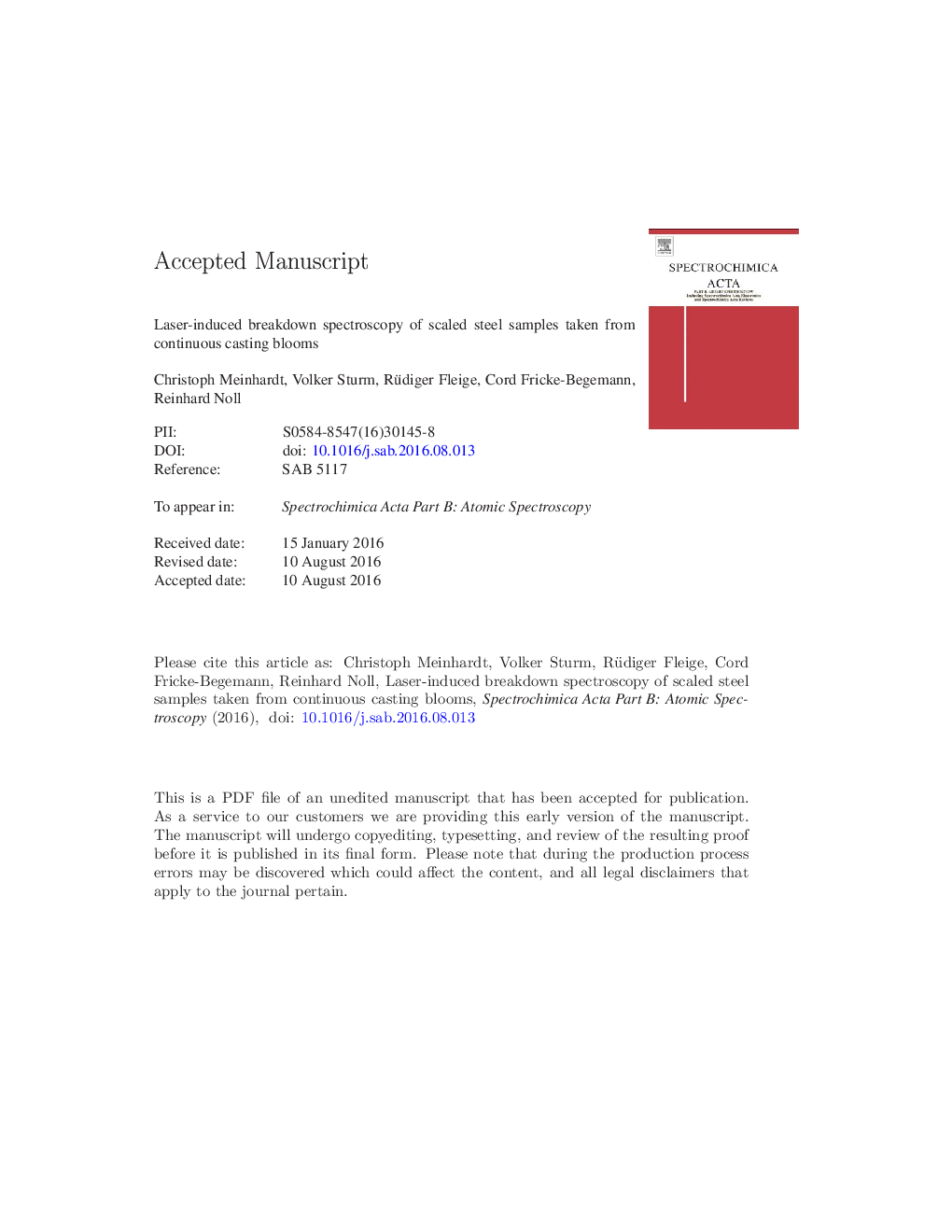| Article ID | Journal | Published Year | Pages | File Type |
|---|---|---|---|---|
| 7674033 | Spectrochimica Acta Part B: Atomic Spectroscopy | 2016 | 10 Pages |
Abstract
To analyse continuous casting steel blooms a removal of non-representative surface layers is required prior to the analysis. In this work, an optimized process is developed to ablate such layers and to analyse the bulk material underneath with laser-induced breakdown spectroscopy (LIBS). A high ablation rate is crucial since the time slot for an inline analysis is limited, e.g. to <1 min. To get a deeper understanding of the material structure between bulk material and surface, samples are sawed out of steel blooms. The samples are analysed in lab scale experiments including LIBS measurements and cross-section polish methods. These studies show that the surface layers may consist both of oxides and metallic layers and typically have thicknesses from 200 μm to 600 μm each. The ablation behaviour of the oxide differs significantly from that of the metallic layers. An operation scheme for inline material identification is worked out to perform ablation and analysis with a single laser source. During the ablation phase and the subsequent measurement phase the laser source is operated with individually tailored parameters. A total penetration depth exceeding 1 mm in steel can be achieved within 20 s of ablation. Thereby the influence of non-representative surface layers on the following LIBS measurement can be suppressed to a large extent. For chromium, relative root mean square errors of predictions of less than 13% were achieved on high alloy samples with up to 16 m.-% Cr and on low alloy samples with Cr contents below 2 m.-%.
Keywords
Related Topics
Physical Sciences and Engineering
Chemistry
Analytical Chemistry
Authors
Christoph Meinhardt, Volker Sturm, Rüdiger Fleige, Cord Fricke-Begemann, Reinhard Noll,
